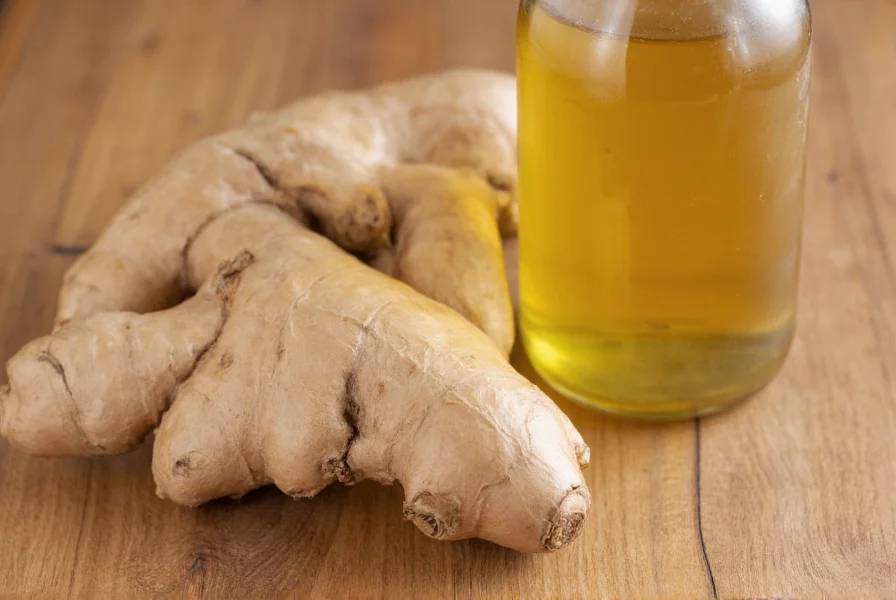For centuries, traditional medicine systems have utilized both apple cider vinegar (ACV) and ginger for their purported health benefits. Modern research provides some validation for individual properties of each, though scientific evidence specifically examining their combined effects remains limited. This comprehensive guide examines what current research reveals about using these two natural ingredients together, separating evidence-based benefits from popular myths.
The Science Behind Individual Ingredients
Understanding the properties of each component separately provides crucial context before examining their potential synergistic effects.
Apple Cider Vinegar Research Findings
Multiple studies indicate ACV may offer several health benefits, particularly related to metabolic health. A 2020 review published in Scientific Reports found that vinegar consumption significantly reduced postprandial glucose and insulin levels in human trials. The acetic acid in ACV appears to slow gastric emptying and improve insulin sensitivity. Research also suggests potential modest benefits for weight management when combined with calorie restriction.
Ginger's Evidence-Based Benefits
Ginger contains bioactive compounds like gingerols that demonstrate anti-inflammatory and antioxidant properties. According to a comprehensive review in the International Journal of Preventive Medicine, ginger shows significant effectiveness in reducing nausea (particularly morning sickness and chemotherapy-induced nausea), osteoarthritis pain, and muscle soreness. The evidence for ginger's anti-nausea effects is particularly robust, with multiple randomized controlled trials supporting its efficacy.

Potential Combined Benefits of Apple Cider Vinegar and Ginger
While specific research on the ACV-ginger combination is scarce, theoretical benefits emerge from understanding their individual mechanisms:
| Potential Benefit | Supporting Evidence Level | Key Considerations |
|---|---|---|
| Digestive Support | Moderate (individual components) | Ginger stimulates digestion while ACV may improve stomach acid production |
| Blood Sugar Management | Preliminary (ACV only) | ACV shows modest effects; ginger research focuses on inflammation |
| Anti-inflammatory Effects | Strong (ginger), Limited (ACV) | Ginger has proven anti-inflammatory properties; ACV evidence is weaker |
| Antioxidant Activity | Moderate (both) | Both contain compounds with antioxidant properties |
Safety Considerations and Proper Usage
Understanding how to safely incorporate apple cider vinegar ginger drink into your routine prevents potential adverse effects. The most common method involves creating a diluted tonic:
Recommended Preparation Method
For those interested in trying this combination, registered dietitians recommend:
- Mix 1-2 teaspoons of raw, unfiltered apple cider vinegar with 8-12 ounces of water
- Add 1/4 to 1/2 teaspoon of freshly grated ginger or 100-200mg of ginger extract
- Optionally include lemon juice or a small amount of honey for taste
- Consume before meals, never undiluted
Important Safety Notes
Despite their natural origins, both ingredients can cause issues when misused:
- ACV's acidity can erode tooth enamel—always dilute and consider using a straw
- Excessive ginger (more than 4 grams daily) may cause heartburn or interact with blood thinners
- People with gastroparesis should consult a physician before using ACV
- Those taking diabetes medications should monitor blood sugar closely
- Pregnant women should limit ginger to culinary amounts (under 1 gram daily)

Debunking Common Misconceptions
The internet abounds with exaggerated claims about apple cider vinegar ginger weight loss benefits and other miraculous effects. Current scientific understanding contradicts several popular myths:
- Miracle weight loss solution: No evidence supports significant weight loss from this combination alone. Any effects would be modest and require dietary changes.
- Detoxification properties: The body naturally detoxifies through liver and kidneys; no evidence shows ACV or ginger enhances this process.
- Cure for chronic diseases: Neither ingredient cures diabetes, cancer, or other serious conditions despite online claims.
- Superior to medications: These should complement, not replace, evidence-based medical treatments.
Evidence-Based Recommendations
Based on current research, here's how to thoughtfully incorporate apple cider vinegar and ginger:
- Use as a complementary approach alongside conventional treatments, not as replacements
- Start with small amounts to assess tolerance (1 tsp ACV, 1/4 tsp ginger)
- Choose raw, unfiltered ACV with "the mother" for potential additional benefits
- Prefer fresh ginger over processed supplements for maximum bioactive compounds
- Consult your healthcare provider if you have GERD, diabetes, or take medications
While the apple cider vinegar ginger shot has gained popularity on social media, scientific evidence supporting dramatic health transformations remains lacking. The most realistic benefits involve modest digestive support and potential complementary effects for blood sugar management when used as part of an overall healthy lifestyle.











 浙公网安备
33010002000092号
浙公网安备
33010002000092号 浙B2-20120091-4
浙B2-20120091-4